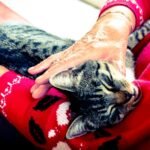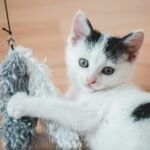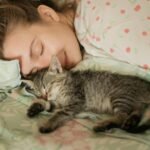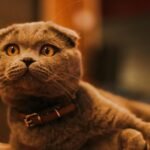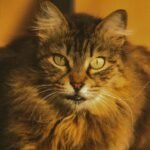Have you ever wondered if the cat purring on your lap could be descended from a feline companion of Egyptian pharaohs or medieval monks? It’s a startling thought: some of the world’s oldest cat breeds are not only surviving but thriving right alongside us in our 21st-century living rooms. These ancient breeds have witnessed wars, sailed across oceans, and curled up at the feet of emperors and peasants alike. Their stories are woven into the fabric of human history, yet today they chase sunbeams and snuggle with us just as they did centuries ago. Let’s take a magical journey through time to meet the ten most remarkable ancient cat breeds still enchanting our modern hearts—and homes.
Egyptian Mau: The Pharaoh’s Spotted Treasure
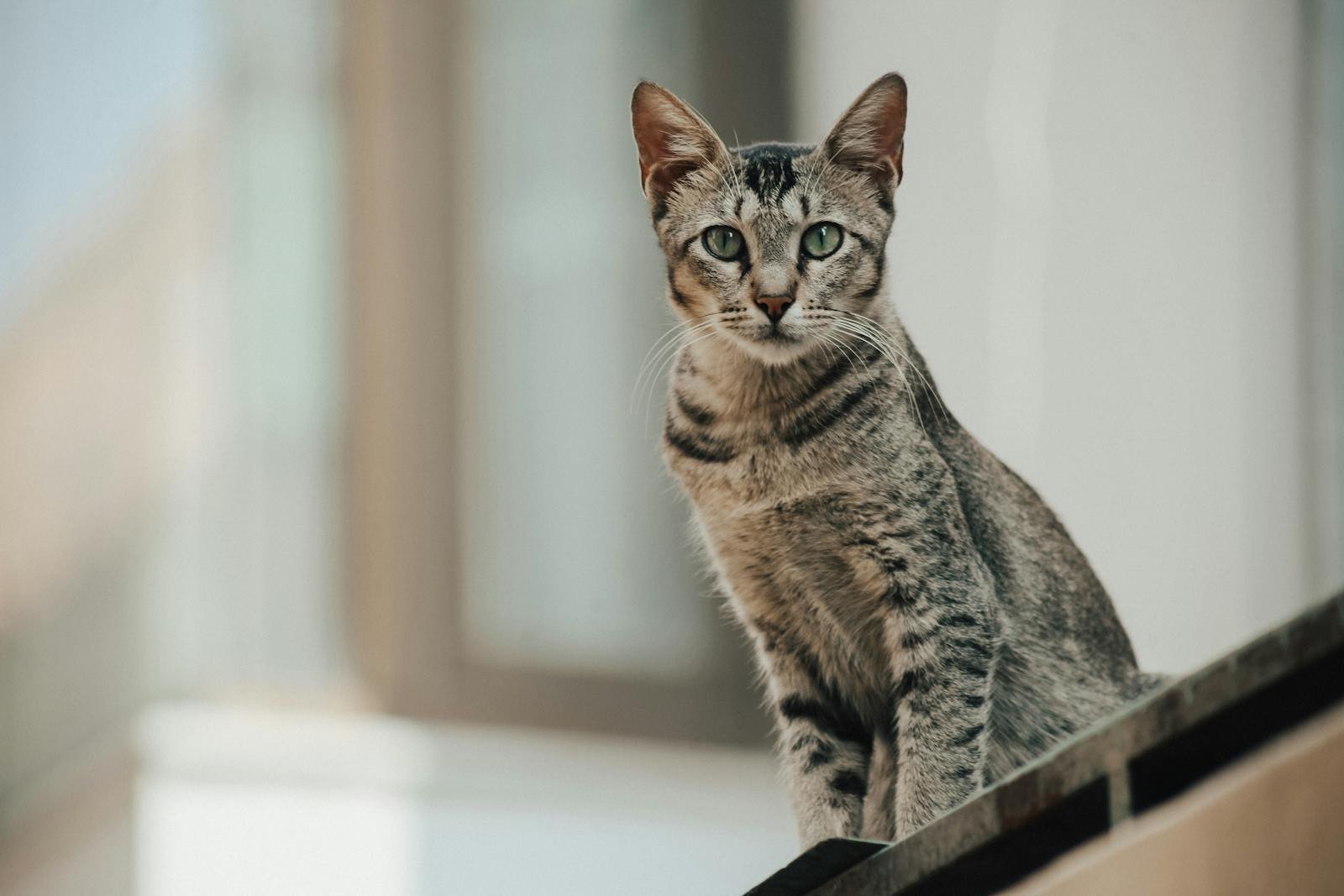
The Egyptian Mau is often celebrated as one of the oldest natural cat breeds, and its roots stretch back to the days of the ancient Egyptian empire. Those mesmerizing green eyes and distinctive spotted coat aren’t just for show—they echo the cats immortalized in hieroglyphics and ancient art. Maus were revered by pharaohs and often mummified alongside their human companions. In today’s world, their playful yet loyal personalities make them beloved family members. The breed’s agility and speed are legendary; some believe the Mau is the fastest domestic cat, reaching speeds up to 30 miles per hour! If you have a Mau at home, you’re living with a living piece of history. Their gentle chirps and musical voices make them not just beautiful, but endlessly charming as well.
Siamese: The Royal Cats of Siam

Siamese cats are instantly recognizable thanks to their striking blue eyes and pointed markings. Originating in the ancient kingdom of Siam (now Thailand), these cats were once only found in royal palaces and Buddhist temples. Their elegance and intelligence have been prized for centuries. Siamese cats are notorious for their talkative nature, often engaging their humans in animated “conversations.” In modern homes, they’re still the stars of the show, demanding attention with their acrobatic antics and affectionate cuddles. Despite their regal heritage, they’re down-to-earth companions who love to be involved in every aspect of family life. It’s almost as if they know they’ve been worshipped in the past—and expect nothing less today.
Persian: The Velvet Aristocrat

With their luxurious long fur and sweet, expressive faces, Persian cats are the epitome of feline royalty. Their history can be traced back to ancient Persia (modern-day Iran), where they were treasured as symbols of wealth and refinement. Over centuries, Persians have graced the laps of sultans and aristocrats, eventually making their way into homes all around the world. Today, Persians are adored for their calm, gentle demeanor and affectionate nature. They thrive in peaceful households, often preferring a quiet corner to nap and observe. Their thick, flowing coats do require daily grooming, but many owners find the brushing ritual to be a soothing bonding experience. Sharing your life with a Persian is like living with a living, breathing work of art.
Abyssinian: The Lively Descendant of the Nile

Abyssinians look almost wild, with their ticked fur and lithe bodies, but they’ve been charming humans for thousands of years. Many believe they are descended from the sacred cats of ancient Egypt, and their resemblance to feline statues from that era is uncanny. Abyssinians are as lively as they are beautiful, known for their boundless energy and curiosity. They love to climb, leap, and explore every inch of their environment, making them perfect companions for active families. Despite their ancient lineage, they adapt wonderfully to modern living, always ready for the next adventure. With their playful antics and affectionate nature, Abyssinians prove that some things—like the joy of a cat’s companionship—never go out of style.
Maine Coon: The Gentle Giant from Colonial America

The Maine Coon’s origins are shrouded in myth, with tales of seafaring cats and rugged survival in the wilds of early America. Though their exact ancestry is debated, these majestic cats have been part of American households since at least the 19th century. Maine Coons are renowned for their impressive size, tufted ears, and bushy tails, as well as their sociable, dog-like personalities. They often follow their owners from room to room, eager to lend a helping paw or offer a comforting purr. Despite their imposing appearance, Maine Coons are famously gentle and patient, especially with children. Their intelligence and adaptability have helped them thrive in both rural and urban homes, making them a beloved fixture in families across the country.
Chartreux: The Blue Mystique of France

Chartreux cats are the enigmatic blue-coated beauties of France, with a history that stretches back to the Middle Ages. Legend has it that these cats lived alongside Carthusian monks, acting as both companions and efficient mousers in the silent monasteries. Chartreux are known for their quiet, contemplative demeanor and their plush, water-resistant coats. Their round, copper-orange eyes and chubby cheeks give them an eternally sweet expression. In today’s homes, Chartreux are valued for their gentle, undemanding presence. They form strong bonds with their families but are never overly needy. Their soft voices and calm temperaments make them ideal for anyone seeking a serene yet affectionate feline friend.
Norwegian Forest Cat: The Viking’s Faithful Companion

Imagine a cat riding with Vikings across stormy seas—this is the legend behind the Norwegian Forest Cat. With their thick, water-resistant fur and powerful build, these cats were perfectly adapted to the harsh Scandinavian climate. They were revered for their hunting skills and often lived alongside Norse families, keeping homes and ships free from rodents. Today, Norwegian Forest Cats are cherished for their striking looks and independent yet affectionate personalities. They enjoy the outdoors but are equally content lounging in a sunny window. Their playful spirit and loving nature make them wonderful companions for families and individuals alike. Having a Norwegian Forest Cat is like sharing your home with a piece of ancient legend.
Korat: The Silver Luck-Bringer from Thailand

The Korat is a symbol of good luck in its native Thailand, where it has been cherished for centuries. With its shimmering silver-blue coat and heart-shaped face, the Korat is both beautiful and endearing. Traditionally, pairs of Korats were given to newlyweds as a blessing for happiness and prosperity. These cats are known for their affectionate, loyal nature and deep attachment to their families. Korats are often sensitive and intuitive, quickly picking up on their owner’s moods. In modern homes, they thrive when given plenty of attention and interactive play. Their gentle voices and soulful eyes make them unforgettable companions, weaving ancient tradition into everyday life.
Burmese: The Golden-Hearted Charmers

Burmese cats, with their satin-like coats and captivating eyes, trace their lineage to the temples and palaces of Burma (now Myanmar). These cats were considered sacred and often lived alongside monks. Burmese are known for their affectionate, people-oriented personalities—they love to be the center of attention and will often greet visitors with enthusiastic purrs and head bumps. Their playful antics and loving nature make them favorites in households worldwide. Despite their ancient roots, Burmese are highly adaptable and thrive in busy family environments or quiet homes alike. Their boundless affection and gentle voices remind us that sometimes, history’s greatest treasures are found curled up on our laps.
Siberian: Russia’s Majestic Survivor

The Siberian cat is the rugged survivor of the Russian forests, with a history dating back over a thousand years. These cats have adapted to some of the harshest climates on earth, developing thick, triple-layered coats to keep out the cold. Siberians were prized in Russian households for their hunting prowess and affectionate nature. Today, they’re beloved for their playful, dog-like personalities and their surprising agility. Siberians are also known for being hypoallergenic, making them a popular choice for families with allergies. Their gentle, loving demeanor and robust health have helped them transition seamlessly from the wild forests of Siberia to the cozy living rooms of modern homes.
Japanese Bobtail: The Lucky Cat of the East
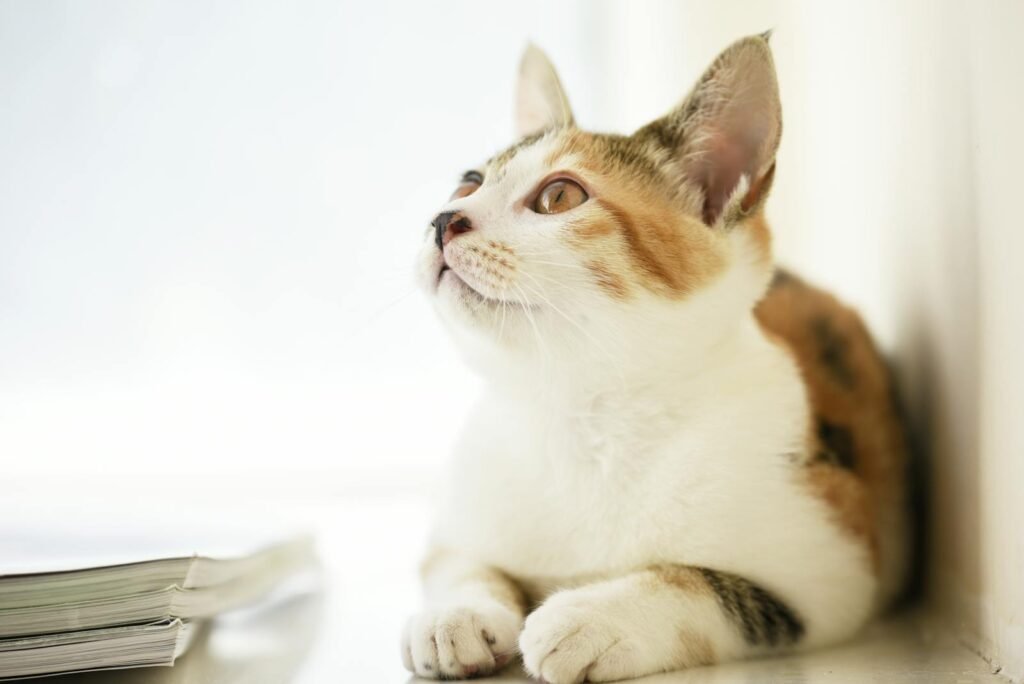
Japanese Bobtails are instantly recognizable by their short, pom-pom tails and alert, expressive faces. In Japan, they have been symbols of good fortune and prosperity for centuries, often depicted in traditional art and folklore. The famous “Maneki-neko” or beckoning cat statue is modeled after the Japanese Bobtail, believed to bring luck to its owner. These cats are playful, intelligent, and highly social, often forming strong bonds with their families. They love interactive play and are known to learn tricks with ease. Japanese Bobtails are just as comfortable in a bustling city apartment as they are in a quiet countryside home, making them versatile and beloved companions.
Turkish Angora: The Graceful Ghost of Ankara

The Turkish Angora is a breed steeped in mystery and elegance, originating from the Ankara region of Turkey. With their flowing, silky coats and graceful movements, Angoras have been admired in Turkish palaces for centuries. They often appear in Turkish folklore as magical, almost ghostly figures. Turkish Angoras are playful, energetic, and extremely intelligent, often surprising owners with their inventiveness. Their affectionate nature means they love being involved in every family activity. These cats are also known for their strong opinions—don’t be surprised if your Angora tries to “help” with household chores! Sharing your life with a Turkish Angora is like living with a mischievous, beautiful piece of living history.
Manx: The Tailless Marvel of the Isle of Man

The Manx cat, famous for its lack of a tail, hails from the windswept Isle of Man in the Irish Sea. The breed’s origins are shrouded in legend, with tales of shipwrecks and spontaneous mutations. Manx cats were cherished by islanders for their hunting skills and affectionate personalities. They are robust, playful, and often described as “dog-like,” following their humans around and even fetching toys. The absence of a tail gives them a distinctive appearance, but it doesn’t slow them down in the slightest. Manx cats are adaptable and thrive in a variety of home environments. Their quirky personalities and deep loyalty make them unforgettable companions.
Turkish Van: The Swimming Cat
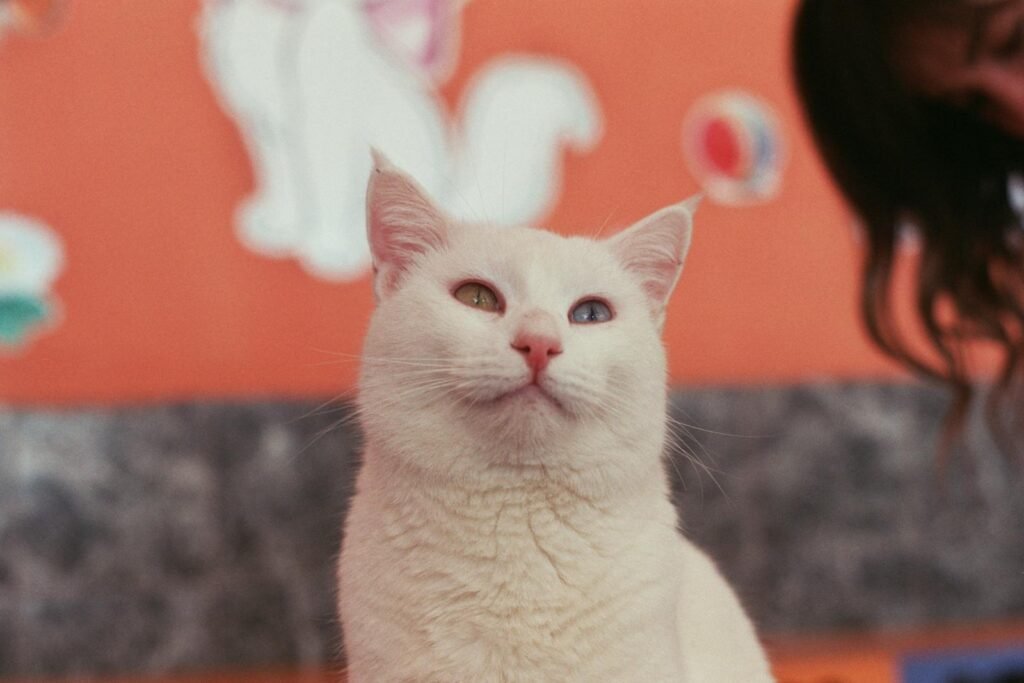
The Turkish Van is a breed like no other, renowned for its love of water—a rare trait among cats. Originating from the Lake Van region in Turkey, these cats have a striking “van pattern” with colored markings on the head and tail. Turkish Vans are sturdy, agile, and highly intelligent. Their playful nature often leads them into all sorts of mischief, especially if water is involved! They’re known for forming strong attachments to their families and can be surprisingly affectionate. The Turkish Van’s history is steeped in regional legend, with some stories claiming they traveled on Noah’s Ark. Today, they’re adored for their unique personalities and striking appearance.
Scottish Fold: The Soft-Spoken Sweetheart

Scottish Folds are instantly recognizable thanks to their unique folded ears, which give them a perpetual look of gentle curiosity. While the fold mutation was first documented in Scotland in the 1960s, the breed’s ancestors date back much further, with stories of folded-ear cats appearing in various cultures. Scottish Folds are known for their calm, affectionate nature and their penchant for sitting in unusual positions, like the famous “Buddha sit.” They’re adaptable, thriving in both busy households and quiet homes. Their soft voices and sweet personalities make them beloved by cat lovers everywhere. Owning a Scottish Fold feels a bit like having a plush toy that purrs and loves you back.
Oriental Shorthair: The Sleek Descendant of the Siamese

Oriental Shorthairs are closely related to the ancient Siamese, sharing the same svelte bodies and almond-shaped eyes. Developed in the 20th century but deeply rooted in the history of Southeast Asia, Orientals come in an astonishing variety of colors and patterns. They are known for their intelligence, curiosity, and vocal personalities. Oriental Shorthairs form strong bonds with their families and crave attention, often following their humans from room to room. Their athleticism and love of play make them endlessly entertaining companions. Living with an Oriental is never dull—they bring a sense of drama and excitement to everyday life, just as their Siamese ancestors did centuries ago.
Singapura: The Little Lion of Singapore

Singapura cats are one of the smallest cat breeds, but don’t let their size fool you—they have personalities as big as their eyes. Originating from the streets of Singapore, these cats are believed to be descendants of ancient Southeast Asian felines. Singapuras are known for their affectionate, playful, and curious nature. They thrive on attention and love to be involved in everything their humans do, whether it’s helping with chores or snuggling on the couch. Their ticked coats and expressive faces make them irresistibly cute. In modern homes, Singapuras are cherished for their adaptability and loving personalities, embodying the spirit of their wild ancestors in a petite package.
Russian Blue: The Shimmering Guardian

The Russian Blue is a breed surrounded by mystery and legend, said to have originated in the cold, misty ports of northern Russia. Their dense, silvery-blue coats and vivid green eyes give them a regal, almost otherworldly appearance. Russian Blues were reportedly favored by Russian czars and aristocrats for their elegance and quiet strength. Today, they’re admired for their gentle, reserved personalities and deep loyalty to their families. Russian Blues are known to be sensitive and intelligent, often forming strong bonds with one or two special people. Their calm demeanor makes them ideal for peaceful homes, where they can watch the world go by from a sunny windowsill.
Balinese: The Long-Haired Siamese
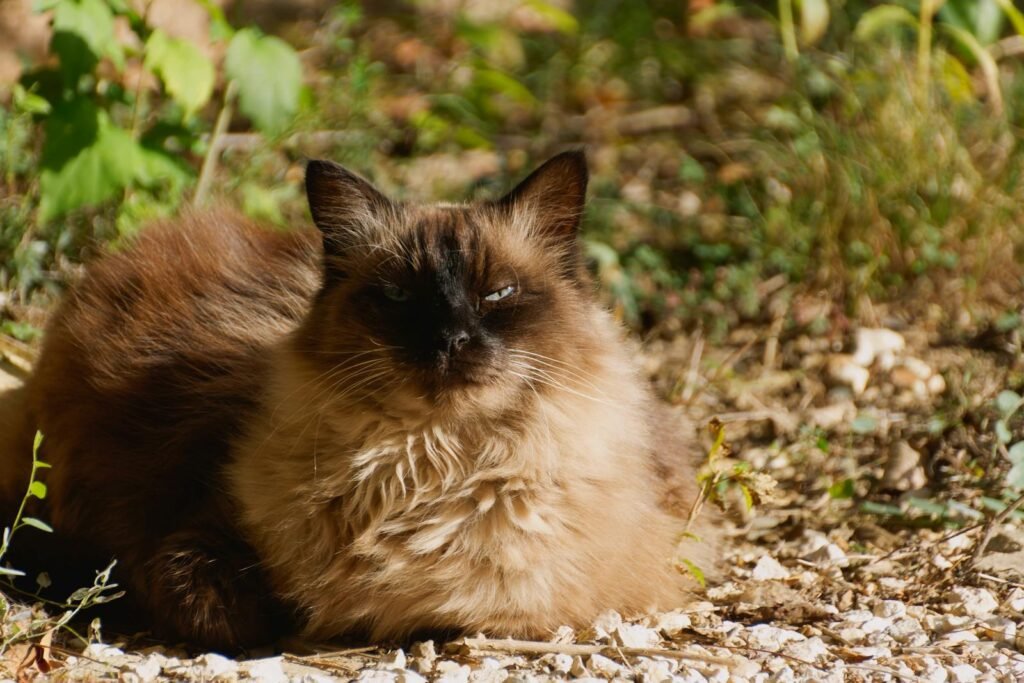
Balinese cats are essentially long-haired Siamese, with the same striking blue eyes and pointed markings. Their origins are somewhat mysterious, but they share the ancient lineage of their Siamese cousins. Balinese are known for their outgoing, affectionate natures and their love of conversation. They are highly intelligent and enjoy interactive play, often learning tricks and games with ease. Balinese cats are deeply attached to their families and dislike being left alone for long periods. Their elegant appearance and playful personalities make them stand out in any home. Living with a Balinese is like having a little comedian with a luxurious coat—always ready to entertain and adore you.
Bombay: The Black Panther of the Living Room

Bombay cats were bred to resemble miniature black panthers, but their lineage includes ancient Burmese, giving them a pedigree that stretches back hundreds of years. Their sleek, shiny coats and copper eyes are utterly captivating. Bombays are known for their affectionate, people-centered natures—they love nothing more than curling up in a warm lap or following their humans around the house. Despite their wild appearance, Bombays are gentle and social, thriving in busy family environments. Their playful antics and loving personalities make them favorites among cat lovers. Owning a Bombay is like having a pocket-sized panther with a heart of gold.
British Shorthair: The Plush Monarch of the Isles

The British Shorthair, with its dense, plush coat and round, teddy bear face, is one of the oldest and most beloved cat breeds in the United Kingdom. Their ancestors arrived with the Romans and have lived alongside humans for centuries, adapting to life in castles and cottages alike. British Shorthairs are known for their calm, easygoing natures and their unflappable demeanor. They’re affectionate without being clingy, making them perfect companions for people who appreciate a bit of independence in their pets. Their robust health and adaptability have helped them thrive in modern homes, where they’re just as happy lounging on a sofa as they are exploring a garden.
This marks the end of the overview of these ancient cat breeds that continue to thrive in today’s homes.

Growing up traveling and experiencing new cultures and wonders, I have had a passion for nature, adventuring, photography, and videography. I am currently working towards a BSc in Biodiversity and Ecology at Stellenbosch University, and I hope to specialise in Marine Sciences one day.
Please send any feedback to Feedback@animalsaroundtheglobe.com

